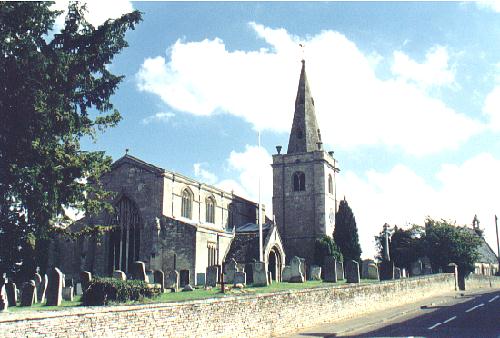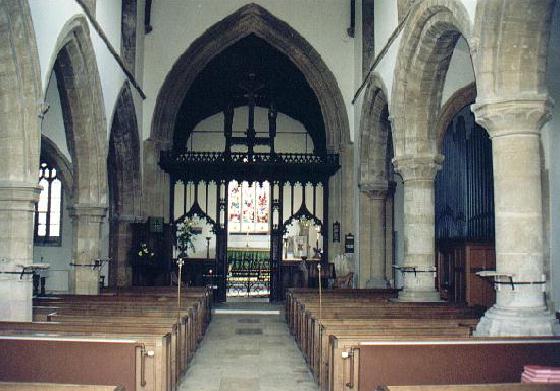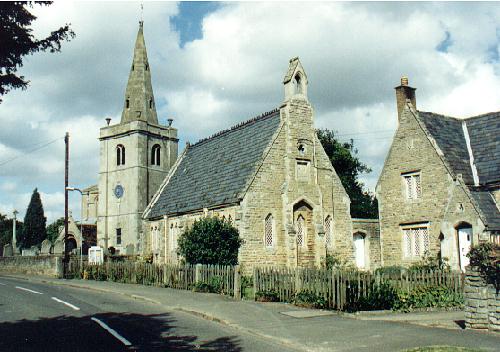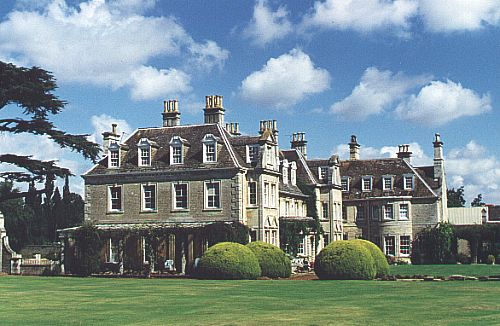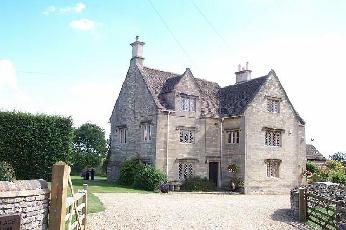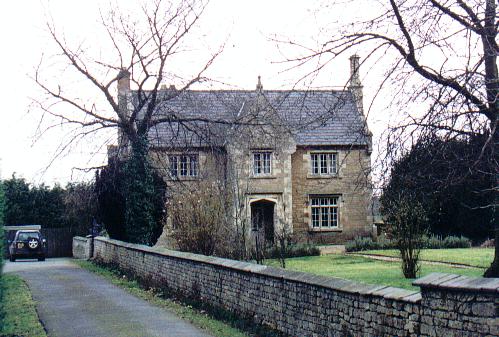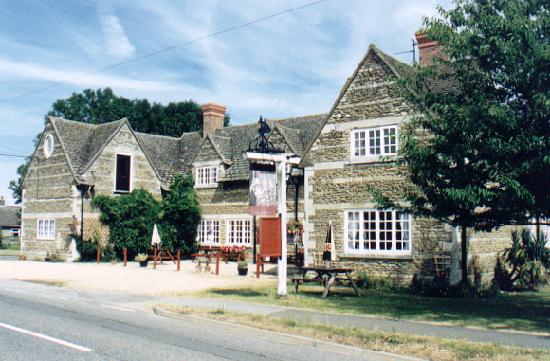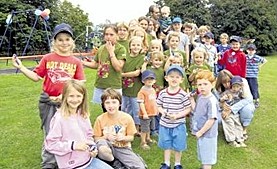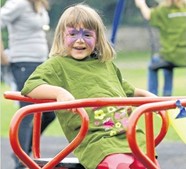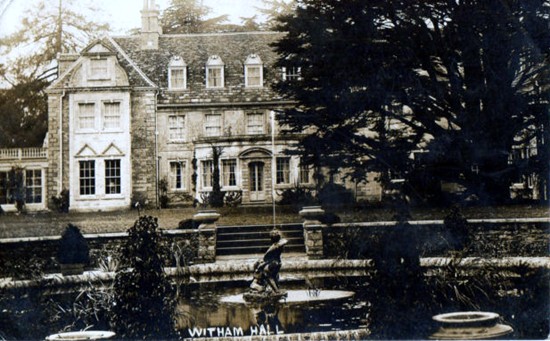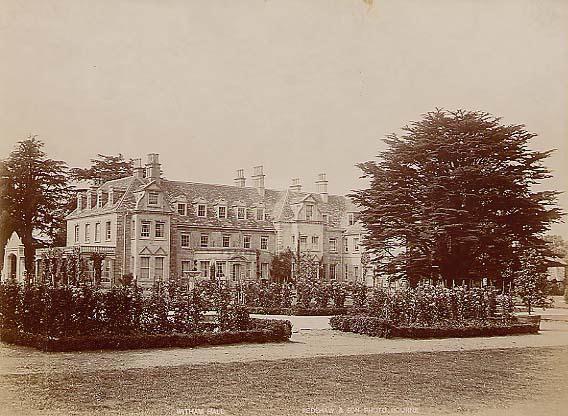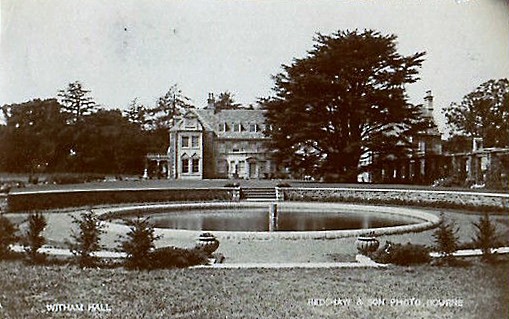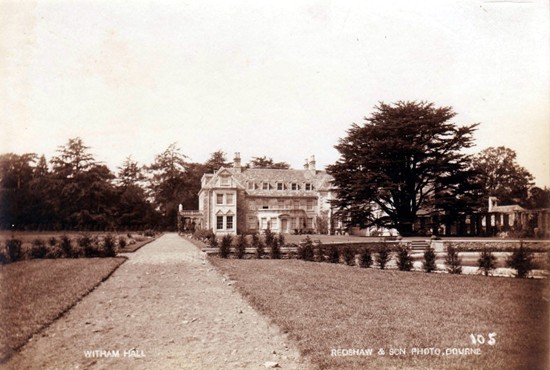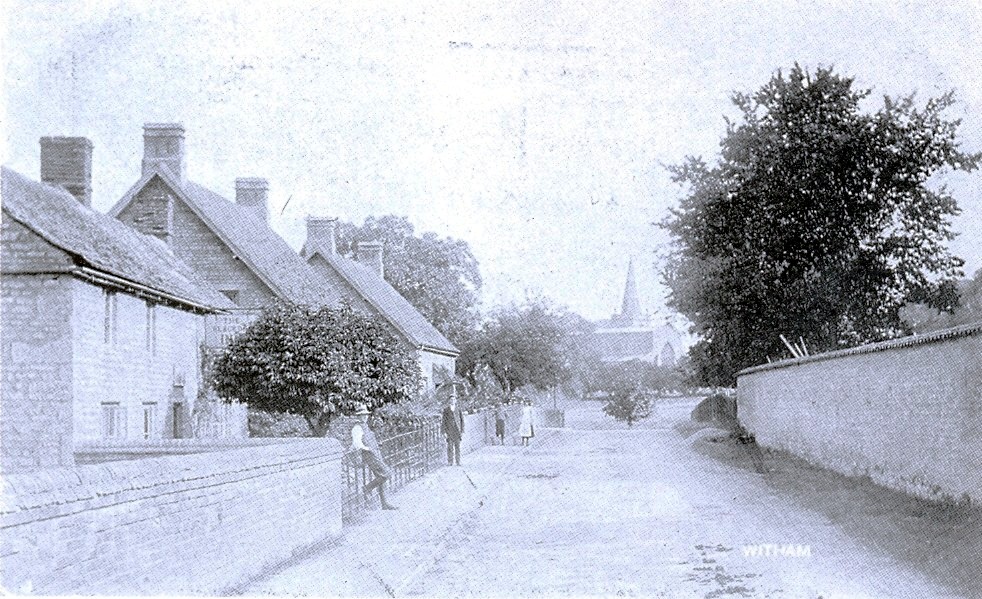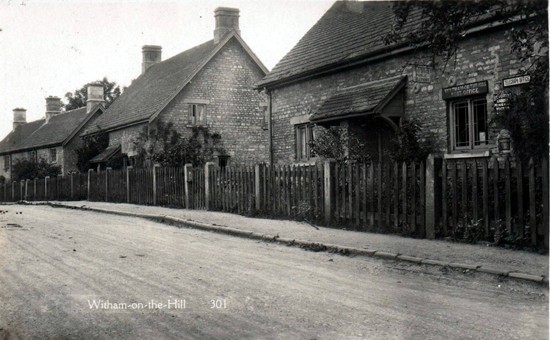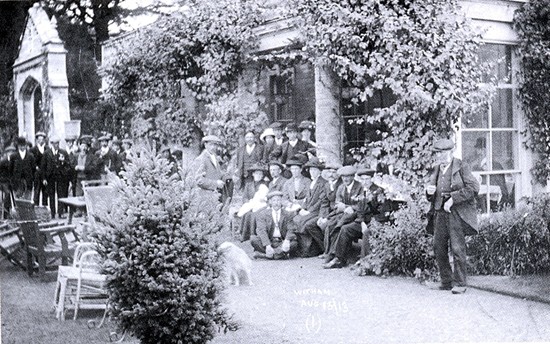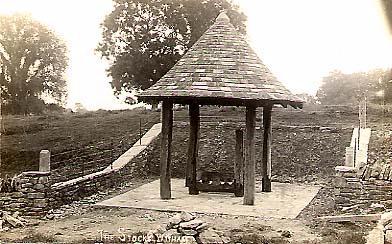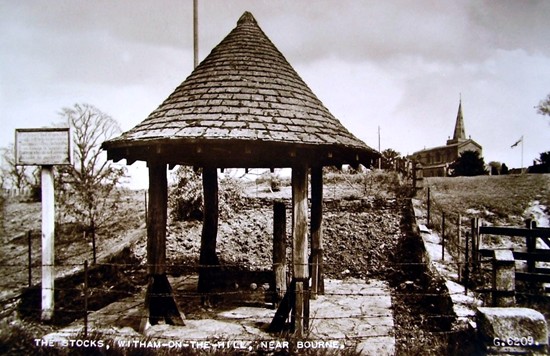|
Witham-on-the-Hill
This
village is mentioned in the Domesday Book, the great land survey ordered by William the Conqueror in 1086 to assess land tax and other dues in his domain, and is, as the name suggests, on a hill and a steep incline leads to the village green and by the side of this large expanse of grass are the mediaeval stocks, a relic of the village's ancient past.
The spacious church of St Andrew was built largely during the 15th century and contains several examples of Norman architecture including the south aisle and the arch and doorway of the south porch. The church tower and spire were rebuilt in 1738 after the earlier ones had collapsed. Distinctive ornamental urns decorate the base of the spire. Central heating has been installed and the flowers are fresh while the blue hand-embroidered hassocks in the pews bear witness to the dedicated following this church has for each bears the name of the individual who worked them. There was originally a peal of five bells in the church tower, three of them from the 17th century, the earliest dated 1623, but a sixth treble bell was added in 1831 during restoration work by William Dobson at his foundry at Downham Market, Norfolk, who also recast the others at a total cost of £395. Metal from the old bells at Peterborough Cathedral were used for the recasting process. One of the bells later cracked and was recast in 1887 by Messrs John Taylor at their foundry at Loughborough in Leicestershire, the cost being met by General William Johnson, of Witham Hall, to mark the Golden Jubilee of Queen Victoria. The bells were removed from the tower again in 1962 for recasting, the work being carried out by the John Taylor company who installed a new set of ringing fittings and framework, the total cost being £2,000.
The south porch has a Norman arch but the figure in the niche over the doorway is modern and replaces the old figure of St Andrew.
Those who died in the village prematurely are remembered with a Children's Corner in the churchyard and one of the more touching tributes is a grave in the form of a Garden of Happy Memories with appropriate statues and a stone seat although this elaborate design does not deserve such neglect.
Train up a child in the way he should go The largest and most famous building at Witham-on-the-Hill is Witham Hall which dates back to the 18th century. The core of the house, just five bays to the east and west, was built between 1752 and 1756 but nothing Georgian remains inside and much has been added to the exterior by A N Prentice between 1903 and 1905. He gave the house an H-plan and added a range to the east side. Along the west side of the house to the entrance, i e along the drive, there is a vista of pseudo-Jacobean arches dated in order 1876, 1830 and 1906. The house was long occupied by the Johnson family, descendants of Archdeacon Johnson, founder of Oakham and Uppingham Schools, but today is hidden by stone walls and high hedges and is used as an exclusive preparatory school for boys and girls and is generally closed to the public. The school was founded in 1959 by J W E Banks, a local farmer and landowner, who bought the building for £4,500 in 1954. He was not sure what to do with it and as a few friends had children, he decided to use it as a school, opening with just six pupils. Today, Witham Hall is an independent, co-educational preparatory school which feeds many of the top senior schools throughout the land and in June 2009, celebrated its 50th anniversary with 235 pupils aged from four to 13.
Palace Farm in the main street at Witham-on-the-Hill was formerly the manor house, with village huts built around it. The name Palace Farm is derived from the fact that it was once the southern palace of the Bishops of Lincoln, conveniently situated just a day's ride from the city of Lincoln. King John is reputed to have stayed here shortly before his death at Newark in October 1216. Palace Farm today is only one third of the original building, which was badly damaged by fire.
The hill in the village name rises boldly between the winding valleys of the rivers Eden and Glen and the church spire on its summit is a prominent landmark. The church dominates the village and it can be seen to good effect from the extensive recreation field adjoining the churchyard.
An impressive Victorian country house stands by the side of the country road halfway between Witham-on-the-Hill and Little Bytham. It is approached by a long drive and a low stone wall marks out its gardens. This is West Farm and beyond are the homes built for farm workers and known as West Farm cottages. It remains today as a handsome, stone-built inn, set in its own grounds in a splendid position with picnic tables on the terrace at the front and others in a pleasant garden at the side.
In the summer of 2007, villagers held a party to celebrate the opening of a new children's playground which had been built at a cost of £37,000, the money raised by a group of mothers who decided to update the old equipment. They embarked on their fund raising a year before and secured grants from several sources, including the county and district councils and the Welland Partnership together with a donation from Witham Hall School.
The ceremony on Saturday 15th September was marked with the cutting of a ribbon to open the play area on the village green followed by games, sports, face painting and a barbecue while children tested out the new equipment which includes a climbing frame, toddler bouncer, rocker, roundabout and balance challenge. The money also helped pay to upgrade facilities for the area including improved drainage, new fencing, goal nets and a seating area.
REVISED MARCH 2015 See also General William Johnson Anthony Fenwick J W E Banks George Todd
Go to: Main Index Villages Index |
||||||||||||||||||||||||||||

